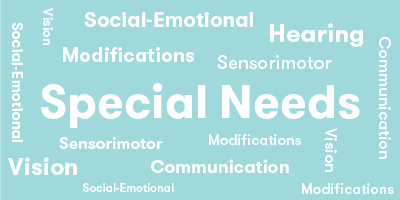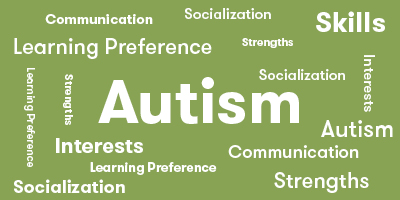






Collapsible content
Today we’ll find out which dinosaurs can live through the worst dangerous events and natural disasters in Simply Fun’s Dinosaur Challenge.
Dinosaur Challenge can be played with 2 to 4 players and is designed to be played with players aged 10 and up.
The game helps players learn dinosaur facts that are then applied to situational analysis as players determine which traits give their dinosaurs the best chance for survival considering the specific challenge they are facing like fires, floods and draughts.
Every Dinosaur Challenge box contains:
36 Dinosaur cards…
and
18 Challenge disks.
The Dinosaur cards each represent a different dinosaur and list 4 generic traits:
1. Toughness
2. Size
3. Speed, and
4. Flexibility
The dinosaur on the card is rated by bars next to each of the traits, from 1 to 5, according to their individual strengths within the traits.
For example, the Stegosaurus isn’t very fast or very tough, but he IS very big and quite flexible, as we see here!
The Challenge disks indicate which dangerous event or disaster your dinosaur will have to overcome in each round. The front of the card show the specific challeng while the back of the card shows the traits that can best deal with that challenge.
To set up the game, mix up all the Challenge disks and place them in a stack, , in the center of the play area with the challenge pictures showing face up.
Then, shuffle all the Dinosaur cards and deal each player 3 cards. Place the remaining Dinosaur cards next to the Challenge disks, where everyone can reach them.
To begin play, the first player to name a time period from the Dinosaur age – like Triassic – selects the top Challenge disk and reads it aloud to the rest of the players.
For example, the Challenge card could be a FLASH FLOOD. In this case, only some of the traits would be advantageous. Others might actually hinder a dinosaur from surviving the challenge. On the next Challenge card, however, a completely different trait might be favored.
Now, all players look at their Dinosaur cards and decide which one of the dinosaurs in their hand could best beat the challenge according to their combination of traits.
Before choosing, each player should consider two things:
1. What traits does a dinosaur need to win the challenge? and
2. Which dinosaur in his hand has the highest score in that trait?
Note that some dinosaurs have bonus traits:
1. meat eating
2. plant eating, and
3. flying
Note: Certain Challenge cards give extra points to dinosaurs with bonus traits. These bonus traits are revealed in the scoring phase. If a player sees the bonus trait picture on the back of the Challenge disk as well as on his Dinosaur card, he wins the bonus point.
Once players have picked their Dinosaur cards, the beginning player flips over the Challenge disk and reads the answer out loud.
Using our example, escaping a flash flood would favor a fast dinosaur and give a bonus point to a dinosaur that could fly! In this case, if a player had chosen Scaphognathus, whose speed ranks 4 and has the bonus of flying, that player would score 5 points and win the round.
After the players add up their trait and bonus points, they read their points out loud and the player with the highest score wins the round and gets to keep the Challenge disk.
After the challenge has been won in that round, all the Dinosaur cards that were played are placed on the discard pile. Players then refill their hands so each has 3 cards for the next round.
Rounds are repeated, with new Challenge cards and new Dinosaur card selections, until all the Challenge disks have been won. If Dinosaur cards run out before that, simply reshuffle the discard pile to start a new deck.
Sometimes, players will have a tie score during the individual challenges. To break the tie, players compare all the trait scores on their Dinosaur cards, one by one, starting with the top trait, and working down, until one Dinosaur’s trait is higher. For example, in this case, Player 1 and Player 2 have equal scores on toughness and size, but in the speed category, Player 2’s dinosaur is faster, so he wins the stand-off.
Once all Challenge disks are complete, players add up the disks they won, and the player with the most disks wins the game.
Dinosaur Challenge is the ultimate game of survival of the fittest. Play your cards right, and maybe you won’t go extinct!


Core Standard*: Language
- Language
- Vocabulary Acquisition and Use. : Grade Level 5th, 6th


Determine
What Does Child Do To Use Skill In The Game?
Players decide what card to play based on the Challenge Disk, and identify the traits and bonus points on the Challenge Disk.
How Parents Can Assist Learning
If children are having difficulty picking a Dinosaur Card to play, ask a couple of questions about the Challenge Disk to help them think about what traits might be best suited to win the challenge.
Learning Implications and Educator Support
Dinosaur Challenge requires children to think about and add details to the challenges by imagining how different dinosaurs may react to the challenge. After thinking about alternatives, children will then pick the Dinosaur Card they believe will win the challenge. If children are having difficulty picking a Dinosaur Card to play, ask a couple of questions about the Challenge Disk to help them think about what traits might be best suited to win the challenge.
Compare
What Does Child Do To Use Skill In The Game?
Players compare the Dinosaur and Bonus Traits on the cards to the Challenge Disk after it is turned over.
How Parents Can Assist Learning
No special adult support required.
Learning Implications and Educator Support
Dinosaur Challenge involves comparing animal traits to the conditions of a scenario to determine which set of traits is most likely to succeed in the scenario. No special adult support required.
Solve
What Does Child Do To Use Skill In The Game?
On each turn, players interpret the challenge and translate that into best traits needed to overcome it.
How Parents Can Assist Learning
If children are having difficulty picking a Dinosaur Card to play, ask a couple of questions about the Challenge Disk to help them think about what traits might be best suited to win the challenge.
Learning Implications and Educator Support
Dinosaur Challenge requires children to think about and add details to the challenges by imagining how different dinosaurs may react to the challenge. After thinking about alternatives, children will then pick the Dinosaur Card they believe will win the challenge. If children are having difficulty picking a Dinosaur Card to play, ask a couple of questions about the Challenge Disk to help them think about what traits might be best suited to win the challenge.
Demonstrate
What Does Child Do To Use Skill In The Game?
After the Challenge Disk is turned over, players look to see who won the round. If encouraged, the winner may share their thinking that led to playing the winning dinosaur.
How Parents Can Assist Learning
Encourage children to discuss their thinking and choices to help each other learn why certain traits are better suited to challenges than other traits.
Learning Implications and Educator Support
Demonstrating knowledge, skills and abilities is an important step in the learning process because it 1) allows a children to show their mastery, i.e. that they have learned something thoroughly enough to share and even teach it to another, and 2) is the beginning of the next level of learning. Encourage children to discuss their thinking and choices to help each other learn why certain traits are better suited to challenges than other traits.
Imagine
What Does Child Do To Use Skill In The Game?
Players need to imagine how each of their three dinosaurs would react to the challenge.
How Parents Can Assist Learning
Ask children to add details to the challenges, to describe how different traits would be helpful or not helpful, or make up stories about how different dinosaurs would act alone or together when facing the challenge.
Learning Implications and Educator Support
Educators can use Dinosaur Challenge to engage children in imaginative play, which in turn can help reinforce scientific knowledge about dinosaurs and the environment. Ask them to add details to the challenges, to describe how different traits would be helpful or not helpful, or make up stories about how different dinosaurs would act alone or together when facing the challenge. Also, provide children with additional facts to consider and weave into their stories.
*Data compiled from CCSSI ELA Standards, WA Science Standards, and Washington Social Studies Standards


Cognitive
Suggestions for How to Modify Play Experience
Dinosaur Challenge requires children to interpret that characteristics a dinosaur will need based on the problem presented on the Challenge disk. Players need to then see which of their Dinosaur Cards shows a dinosaur with the highest level of that trait. This requires problem analysis, inference, and comparison. This may be difficult for children with cognitive delays.
Children with cognitive delays should be able to play Dinosaur Challenge with a partner. This will enable the partner to discuss the meaning of the problem and guide the child to think about what trait is needed (Toughness in a fight, Size, Speed, or Ability to move and adapt). The child can then independently look at the cards and compare which dinosaur has the most of that trait based on the graph. The child can also help to count the points. This process will introduce graphs and new vocabulary, and help players learn to make inferences.
Children may not be able to read the words on the cards, so introduce the meaning of the symbols for the traits and what they stand for. For example, the symbol for toughness looks like sharp teeth; the symbol for size is a heavy weight; the symbol for speed shows direction of movement; and the symbol for Flexibility shows that the animal can live in many places on earth. Bonus point are earned from the symbol of a chicken leg for meat eater, a leaf for plant eater, and a wing dinosaur for flyer). Reading symbols is an important foundation for reading and understanding them will enable the child to make independent comparisons across the cards.
Communication
Suggestions for How to Modify Play Experience
No communication is needed to play Dinosaur Challenge other than announcing a score after each round. However, players will want to talk about their dinosaurs and their traits. Encourage children to announce the name of their dinosaur (after another player reads and pronounces it), label the traits of their dinosaur and show other players the characteristics of their favorite for each round.
Model using the terms on the cards and encourage children to imitate the vocabulary as they share their findings after each round.
Sensorimotor
Suggestions for How to Modify Play Experience
There are not many movement requirements in Dinosaur Challenge, so children with fine motor concerns should be able to play with a little assistance Players need to turn over their cards to study the possible winner. If this is a problem, use a card stand to hold the cards in an upright position. The child can then indicate which of the three cards he wants to put forward.
Social Emotional/Behavioral
Suggestions for How to Modify Play Experience
Dinosaurs are popular for young children and often stimulate aggressive play. After several rounds of play allow children to create a scene with the discarded Challenge cards and use the discarded Dinosaur Cards as actors to create a brief play. This will enable the child to have an avenue for release of aggression stimulated by looking at the angry-looking dinosaurs. After a few minutes, return to a new round of game play.
Vision
Suggestions for How to Modify Play Experience
Children with vision impairment may not be able to see the words on the cards or the graphs describing characteristics of the various dinosaurs.
The rankings on the Dinosaur cards are small, making them difficult to read. Play with a partner will enable the child to have someone read the information and describe the graphs on each card.
Hearing
Suggestions for How to Modify Play Experience
Children who are hard-of-hearing can play the game. They will need to read the Challenge Card to decide on which of their cards is the best fit, and then read their cards to choose a winner. They will, however, miss out on the discussion about the dinosaurs unless other players use sign language or the player can read lips.
*Data compiled from CCSSI ELA Standards, WA Science Standards, and Washington Social Studies Standards


Autism Strengths & Interests
Short Summary of Strengths & Interests
- Can read a statement and infer from the meaning what characteristics are needed to solve a problem.
- Likes verbal reasoning.
- Can read a simple graph.
Is good at matching visual items
This game is not appropriate
Has a good memory for words, phrases and dialouge
This game is not appropriate
Has a good memory for pictures, numbers and patterns
Is This Game Appropriate? Yes
Description
Players need to understand the meaning of the vocabulary used to describe the dinosaurs, be able to comprehend the problem outlined on the challenge card.
Likes to put things in order or a sequence
Is This Game Appropriate? Yes
Description
Players need to recognize patterns on the graph and compare which graph indicates to most or least of a trait.
Learns through visualizing or "replaying" actions in their mind
This game is not appropriate
Likes activities with rules, such as math and phonics
This game is not appropriate
Is very concrete and literal
This game is not appropriate
Learns in small "chunks" (for example, phone numbers are 3 chunks of number xxx-xxx-xxxx that are combined together)
This game is not appropriate
Is good at nonverbal reasoning and logic
This game is not appropriate
Likes spatial problem solving
This game is not appropriate
Can read well with good vocabulary, though may not fully comprehend content
Is This Game Appropriate? Yes
Description
A little spatial reasoning is involved when players need to compare the graph lines on the trait charts.
Likes to use and has good fine motor skill
Is This Game Appropriate? Yes
Description
Players need to be able to read the Dinosaur cards and the Challenge Disk to play the game.
Likes established routines or set ways of doing things
Is This Game Appropriate? Yes
Description
Players need to manipulate the cards and the Challenge disk. This game is not appropriate
Likes manipulating, constructing or building things
Is This Game Appropriate? Yes
Description
The game is played in the same way each time, though players will draw different cards and challenges.
Likes to use and has good musical abilities
This game is not appropriate
Likes to use and has good drawing skills
This game is not appropriate
Autism Special Considerations
Appears to ignore other's communication and/or has difficulty giving eye contact to a communication partner
Is This Game Appropriate for Child with Characteristic? Yes
Can Child with Characteristic Play Game w/o Modification? Yes
Strategies for Developing Compensatory Skills:
Eye contact is not needed to play Dinosaur Challenge.
Has difficulty understanding complex verbal directions
Is This Game Appropriate for Child with Characteristic? Yes
Can Child with Characteristic Play Game w/o Modification?Yes
Strategies for Developing Compensatory Skills:
Directions for Dinosaur Challenge are simple and straight forward. Players do need to understand inference to play the game, however. The Challenge Card describes a situation and players need to determine which of the dinosaurs on their Dinosaur Cards would do best in this situation or event. Players may need to discuss the situation described on the Challenge Card to help players think about the implications.
Uses vocabulary inaccurately or demonstrates echolalia (repeating another's speech)
Is This Game Appropriate for Child with Characteristic? Yes
Can Child with Characteristic Play Game w/o Modification? Yes
Strategies for Developing Compensatory Skills:
Verbal skills is not a requirement to play the game.Children with this characteristic can be helped to "look and listen" as Challenge Cards are read.
Gets stuck repeating a verbal topic or physical actions and/or has difficulty attending to others' actions or topic.
Is This Game Appropriate for Child with Characteristic? Yes
Can Child with Characteristic Play Game w/o Modification? Yes
Strategies for Developing Compensatory Skills:
Even if the child persists on a particular topic unrelated to the game, it should not interfere with the game. Players look at their own cards in relation to the Challenge Card event. Adults will want to point out the dinosaur cards and encourage the child to think about these dinosaurs and listen to the situation that they will encounter. This may help the child re-focus.
Has difficulty producing speech/communication
Is This Game Appropriate for Child with Characteristic? Yes
Can Child with Characteristic Play Game w/o Modification? Yes
Strategies for Developing Compensatory Skills:
The game can be played without talking.Players can record their scores to share with others and determine who won the round.
Has difficulty sequencing multi-step actions and/or doing complex abstract tasks
Is This Game Appropriate for Child with Characteristic? No
Can Child with Characteristic Play Game w/o Modification? No
Strategies for Developing Compensatory Skills:
Although the actions in the game are simple, the game requires players to draw inferences from the Challenge Card. This requires an abstract thinking ability. Children can learn this through partnering with another player who can help them think through the events outlined on the Challenge Card.
Demonstrates difficulty initiating and maintaining social interactions
Is This Game Appropriate for Child with Characteristic? Yes
Can Child with Characteristic Play Game w/o Modification?
Strategies for Developing Compensatory Skills:
Social interactions are not important to play the game.Although players will want to discuss their dinosaur cards, the game requires only individual thinking and play.
Acts out or demonstrates avoidance behaviors when frustrated, overwhelmed, or needs more sensory input.
Is This Game Appropriate for Child with Characteristic? Yes
Can Child with Characteristic Play Game w/o Modification? No
Strategies for Developing Compensatory Skills:
If the child needs to engage in a more sensorimotor activity, these can be built in after several rounds of play. Provide opportunities for gross motor movement (ex: pretend to be the dinosaur that is on the card the child plays) and fine motor manipulation of preferred toys or objects (ex: small dinosaur action figures).
Has short attention span for non-preferred activities
Is This Game Appropriate for Child with Characteristic? No
Can Child with Characteristic Play Game w/o Modification? No
Strategies for Developing Compensatory Skills:
If the child is not interested in dinosaurs or has difficulty with games requiring abstract thinking, this game is not recommended.
Needs sameness or consistent routines and/or has difficulty with transitions from one activity to another
Is This Game Appropriate for Child with Characteristic? Yes
Can Child with Characteristic Play Game w/o Modification? Yes
Strategies for Developing Compensatory Skills:
The game is played the same way each time, so it provides a consistent routine once the child is familiar with the game process. Use interesting dinosaur cards to motivate the child to transition to the game.
Has difficulty understanding others' feelings, intentions, and the reasons for others' actions.
Is This Game Appropriate for Child with Characteristic? Yes
Can Child with Characteristic Play Game w/o Modification? Yes
Strategies for Developing Compensatory Skills:
Dinosaur Challenge does not require the child to understand what others are thinking, feeling, or intending to do.No strategy is involved in the game.
*Data compiled from CCSSI ELA Standards, WA Science Standards, and Washington Social Studies Standards


Extra Ways to Play the Game
In this variation, play under the normal rules but with new scoring. First, each player who does not win a challenge round can earn a point if they can tell one accurate fact about the winning dinosaur. Second, all Challenge Disks are worth two points. At the end of the game, the person with most points wins.
Materials Needed
No additional materials needed
Developmental Benefits
This variation helps children strengthen their memory skills and demonstrate their mastery of information regarding dinosaurs.
Extra Ways to Play the Game
Play the game where the winning player of a challenge needs to explain verbally why their winning dinosaur was the winner.
Materials Needed
No additional materials needed
Developmental Benefits
Players can win a round by chance. When players need to justify their response, they have to think logically and demonstrate their understanding of the different characteristics of the dinosaurs.
Extra Ways to Play the Game
If more than 2 players are in the game and there is a tie, each of the tied players verbally justifies why their dinosaur should win. The other player(s) vote on the winner.
Materials Needed
No additional materials needed
Developmental Benefits
Players can win a round by chance. When players need to justify their response, they have to think logically and demonstrate their understanding of the different characteristics of the dinosaurs.
Extra Ways to Play the Game
Dinosaur Challenge would be appropriate for children as young a 5 or 6, provided that another player or supervising adult reads the Challenge Disks.
Materials Needed
No additional materials needed
Developmental Benefits
This variation expands the age range of the game. It also allows older children to demonstrate mastery by supporting younger children, and younger children to build confidence as they compete successfully with older children.
*Data compiled from CCSSI ELA Standards, WA Science Standards, and Washington Social Studies Standards
Game Details
- 18 Challenge Disks
- 36 Dinosaur Cards
- 1 Rules Booklet
- Choosing a selection results in a full page refresh.
- Opens in a new window.









